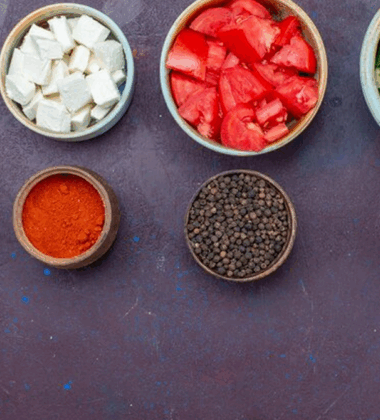The Global Products Expo, happening June 26–28, 2025, at the New Jersey Expo Center, isn’t just about showcasing flavors—it’s about understanding the rules that define them. As food brands expand globally, flavor formulation has become more than a matter of culinary creativity. It’s now also a legal and strategic challenge. The culprit? Increasingly strict sodium caps and other flavor restrictions imposed by governments worldwide.
At the intersection of public health and product innovation lies a critical question for every exhibitor at the Food and Beverage Expo USA: How do we create great-tasting products while staying within the limits set by diverse regulatory bodies?
Why Sodium Is Under Global Scrutiny
Excess sodium consumption has been directly linked to high blood pressure and cardiovascular disease—two leading causes of death worldwide. As a result, governments and public health organizations have begun to implement sodium reduction strategies, urging food and beverage manufacturers to reformulate their products.
From mandatory sodium caps to voluntary reduction targets, these regulations are no longer limited to niche categories. Snacks, ready meals, soups, sauces, breads, and even beverages are being held to new standards. These shifts have major implications for anyone planning to launch or showcase products at global expos.
What Are Sodium Caps?
Sodium caps refer to legal limits placed on the amount of sodium that can be present in a specific food product. These regulations vary widely by country and product category.
Some examples include:
- United States (FDA): While the U.S. has traditionally used voluntary targets, the FDA is increasingly pressuring brands to meet recommended sodium reduction goals, particularly in processed foods.
- United Kingdom (FSA): The UK has pioneered a structured, category-based sodium reduction program since the early 2000s, with set targets for over 80 food categories.
- South Africa: One of the first countries to mandate sodium caps for processed foods, including bread, snacks, and breakfast cereals.
- Argentina and Chile: Both countries have introduced mandatory sodium limits, with labeling laws that penalize high-sodium products.
- Saudi Arabia and UAE: New regulations are being introduced as part of broader national health strategies to reduce hypertension and obesity.
For exhibitors at the Food and Beverage Expo USA and other international events, these regulations affect everything from product formulation to labeling and market entry strategies.
The Impact on Flavor Development
Salt is one of the most effective tools in a food scientist’s arsenal. It enhances taste, preserves freshness, and contributes to texture. Reducing sodium without sacrificing flavor is a technical and sensory challenge.
Here’s how R&D teams are adapting:
1. Salt Substitutes and Blends
Many brands are experimenting with potassium chloride, seaweed extracts, and umami-rich ingredients like mushrooms and tomato powders. However, these substitutes can create aftertastes or interact poorly with other ingredients.
2. Flavor Masking Technology
To maintain palatability, companies are using bitterness blockers and aroma enhancers. These technologies help recreate the mouthfeel and flavor profile of salt without adding sodium.
3. Microencapsulation
This technique involves coating salt particles to delay release until consumption, creating a more intense initial salt burst while using less sodium overall.
4. Textural Strategies
Crunch and crispness can amplify perceived saltiness. Reformulating the texture of foods (especially snacks and baked goods) allows for salt reduction without noticeable sensory loss.
Regulatory Pressure Meets Consumer Expectations
Reducing sodium is not just a regulatory issue—it’s also a branding opportunity. According to a recent report, 54% of U.S. consumers are actively seeking lower-sodium options, and many prefer products labeled as “heart-healthy” or “reduced sodium.”
However, there’s a fine balance to strike:
- Go too far, and you risk compromising taste—a critical failure in competitive product categories.
- Don’t go far enough, and you may face regulatory barriers, labeling penalties, or miss out on procurement deals with health-conscious retailers and institutional buyers.
For exhibitors at the Global Products Expo and similar food and beverage trade shows, your booth may need to communicate not just how your product tastes—but how it complies.
Labeling and Compliance Across Borders
Adapting to sodium caps is about more than just formulation. It’s about knowing how to label and market your product for each region.
Here are some key variations:
- U.S.: The FDA allows “low sodium,” “very low sodium,” and “sodium-free” claims, but each comes with strict mg-per-serving limits.
- EU: The European Food Safety Authority (EFSA) provides nutrient profiles and guidance for sodium-related claims. Any claim must be supported by lab results.
- Middle East and Latin America: Front-of-pack warning labels are becoming more common, flagging high-sodium products to consumers and restricting advertising to children.
For global brands showcasing at the Food and Beverage Expo USA, it’s essential to tailor product packaging, booth messaging, and distributor materials to meet the local norms of your target export markets.
Trade Show Strategies: How to Position Low-Sodium Products
If you’ve invested in sodium reduction, make sure the right people know it. Here’s how to use your presence at the expo to highlight compliance and innovation:
- Feature “before and after” reformulations in taste tests or live demos to show your product’s journey.
- Create signage and educational handouts that explain why sodium caps matter and how your brand leads in this area.
- Include health professionals or nutritionists at your booth to validate your claims and engage with buyers on a deeper level.
- Mention sodium compliance in buyer presentations, especially if you’re targeting health-oriented chains, schools, or government contracts.
Looking Ahead: Sodium Regulation Trends in 2025 and Beyond
If your brand is thinking globally, you need to think ahead. Here are key trends shaping sodium regulation and flavor policy in the years to come:
- Mandatory labeling laws will expand, especially in Asia, Latin America, and the Middle East.
- Sodium taxes may be introduced, similar to sugar taxes, creating financial incentives to reformulate.
- AI and data-driven product development will play a role in finding optimal sodium levels by analyzing large-scale consumer feedback and purchase data.
- Cross-category regulation will expand—expect to see sodium caps in beverages, meat alternatives, and sauces.
Final Thoughts
Sodium caps are no longer niche regulations—they’re shaping the future of food and beverage globally. Whether you’re developing a savory snack or a ready-to-drink soup, understanding these evolving requirements is critical to both compliance and competitive advantage.
Exhibiting at the Global Products Expo or Food and Beverage Expo USA is a chance to show that your brand isn’t just flavorful—it’s forward-thinking. With the right formulation strategy, clear labeling, and compliance expertise, your low-sodium product can lead in markets from New Jersey to Nairobi.
In the world of global taste, less salt might just mean more opportunity.





